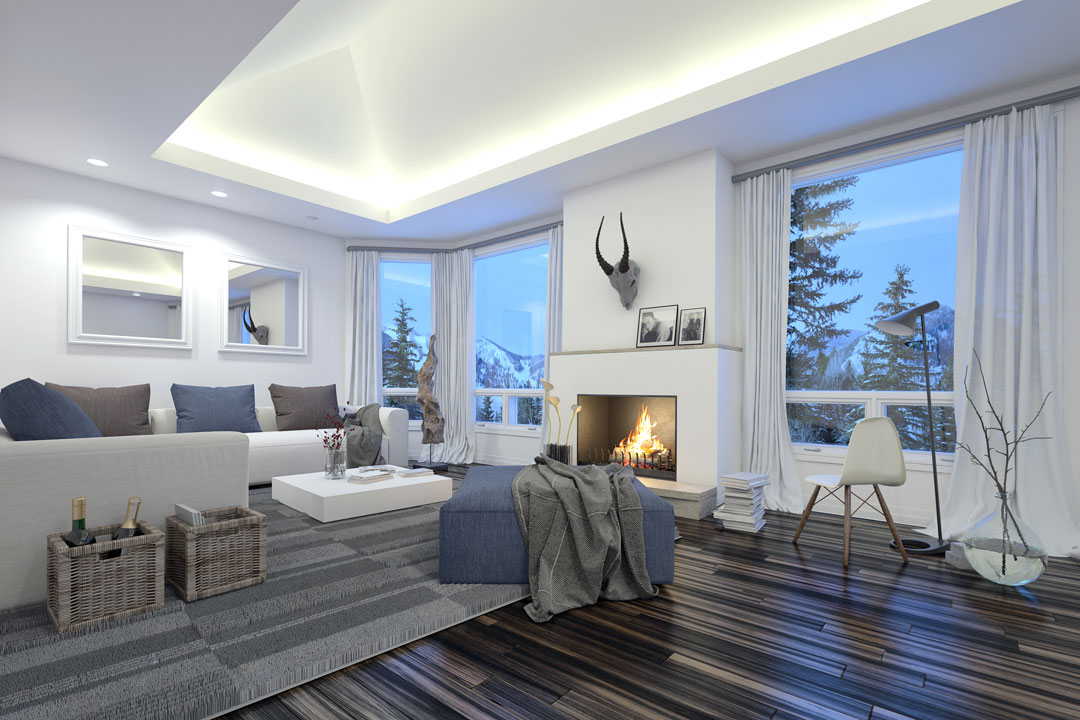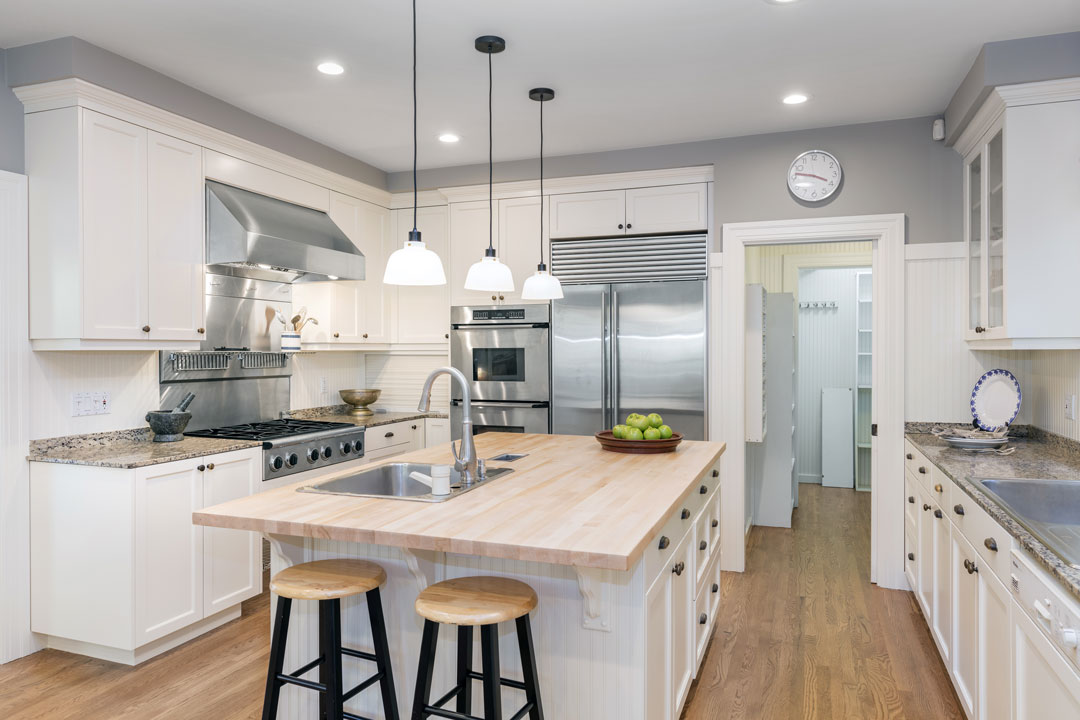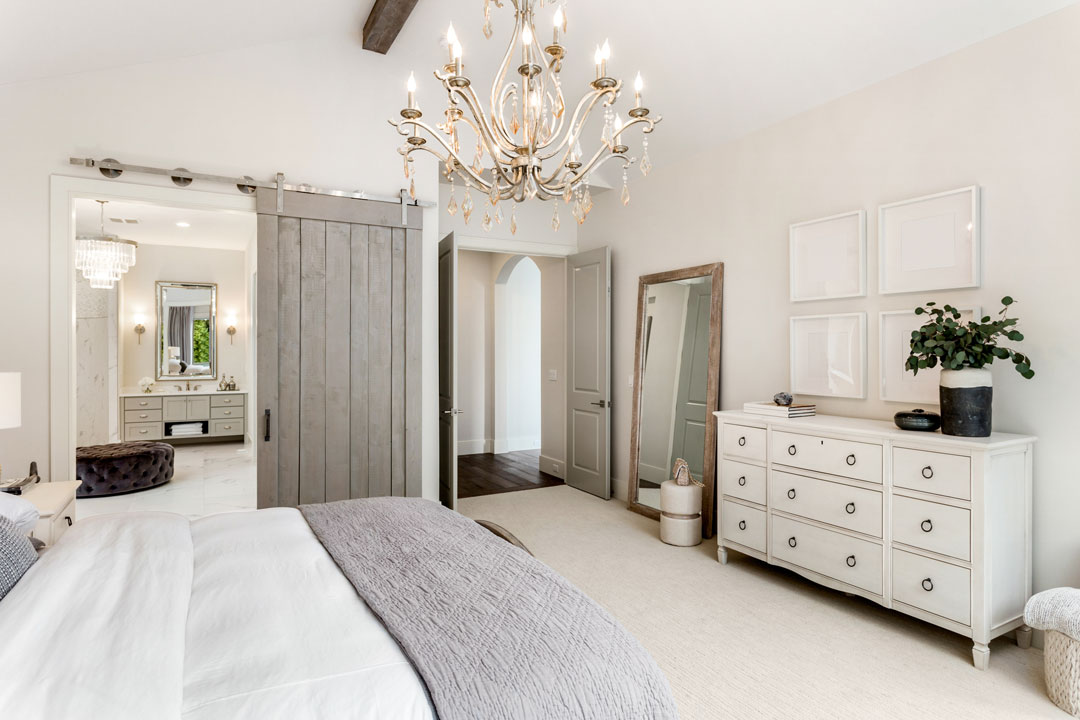Lighting is a topic that can become very technical very fast (what Kelvin temperature of bulbs do you buy? What wattage? How many foot candles of light do you need?) but, in my opinion, good lighting all starts with a feeling. Now that day light saving is upon us and it is dark starting at 5:00 p.m., I wanted to take this opportunity to talk a bit about lighting design and things to consider in your space.
Access Your Space
First, and most importantly, assess what activities are taking place in the space that you need to light. Are you performing work that needs precision like cooking in the kitchen or working at a desk? Are there TVs, computer screens or projector screens where glare may become an issue? Is there a certain mood you would like to set? Different lighting solutions are going to be appropriate for different tasks and most likely all spaces will use a combination of these strategies.
Ambient Lighting
Ambient lighting is the general, overall illumination of a room. This is something that should be found in every space to make it comfortable enough to be in the space without having shadows and dark corners, but one should be careful to not make the ambient light too bright. Most often ambient light will be achieved with ceiling mounted or recessed can lighting, pendants, or wall sconces. After you achieve the overall illumination, you can move on to the other strategies to provide more light where needed.
Task Lighting
The next step is to provide specific sources of light to areas where a task is occurring. This can be many things like reading, cooking, crafts, studying or working. Generally, the amount of light needed will be congruent to the level of precision of the task. Lighting levels on a cooking surface will need to be brighter in order for you to not cut your finger than you will need to read a book. The source of the task light will generally be closer to the surface than ambient lighting, so think about adding lamps, fixtures with directional reflectors or track lighting where you can move the light source and point it in a specific direction.
A secondary consideration to task lighting is whether glare will be an issue. If computer screens, TVs or projector screens are involved, make sure the light isn’t shining directly on them.
Accent Lighting
Accent lighting is used to highlight a feature such as a fireplace, a beautifully textured wall or special material, or artwork. This is where you can really start having some fun and add some drama. Think about what is special in the space that you want to draw your eye to. Accent lighting can be achieved with spot lights, wall washers, and picture lighting.
Mood lighting
Accent lighting and mood lighting probably have some overlap, but I wanted to talk specifically about how to use lighting to create a specific mood, especially when it comes to adding drama or a more intimate, romantic touch. My first rule here is that ceiling mounted downlights usually aren’t the solution. They are great to provide ambient lighting, but they won’t do much as far as a mood goes. Consider instead bouncing light off other surfaces, such as a chandelier that directs light up and bounces it off the ceiling or a ceiling cove that softly illuminates the walls. Another good general strategy is to put lights on dimmers. This way you can change the light from ambient to a more mood-light level without having separate fixtures.
General Rules of Thumb
Okay, now that I’ve talked all about the touchy-feely and have given no actual solid advice, because yes, unfortunately a lot of this is subjective, here are a few cold hard facts to follow:
- For the type of light we are used to having in our homes, Warm or Soft light bulbs in the range of 2700-3000 Kelvin are typical. There has been a lot of confusion about light bulb temperature ratings since the conversion from incandescent bulbs to LEDs. Yes, it may be instinctual to assume you want to simulate daylight, but some of those bulbs look blue which many homeowners don't like. Most people prefer to simulate candlelight in their home, which is warm, so the Warm or Soft Light bulbs around 2700-3000 Kelvin are a great option. There is no right or wrong answer though, it's all about your preference. Angie, actually prefers 4,000 K!
- Switching – if you are designing your space from scratch, consider where you will be in the room when you need to turn the light on or off. Most often this will be upon entering the room, but can you enter or exit in multiple ways where you will need a switch? Or one of my biggest pet peeves, do you have to crawl out of bed to turn off the light after you’re all warm and cozy? Do yourself a favor and add bedside lighting in the form of a lamp or wall sconce to avoid this! Also, consider the different layers of lighting you have in the space and if you want them all to be controlled with one switch, or if you want different switches for the different layers of lighting.
- Consider furniture arrangements both current and future. Nothing is more annoying than a chandelier that isn’t centered over your table. Consider first where your furniture will be placed within the room and then place your lighting according to that.
- The best light at the bathroom vanity is light coming from both sides of the face. This means sconce lighting or pendants on both sides. Nobody looks good with downlights shadowing their eyes and emphasizing how tired they are!




I hope this was helpful! Lighting is certainly a robust topic and is a specialty within the design industry. As a design professional myself, I have had several projects where I have hired a lighting designer as a consultant, so don’t be afraid to find an expert to help. Good lighting can definitely make or break a design so getting it right is important!
